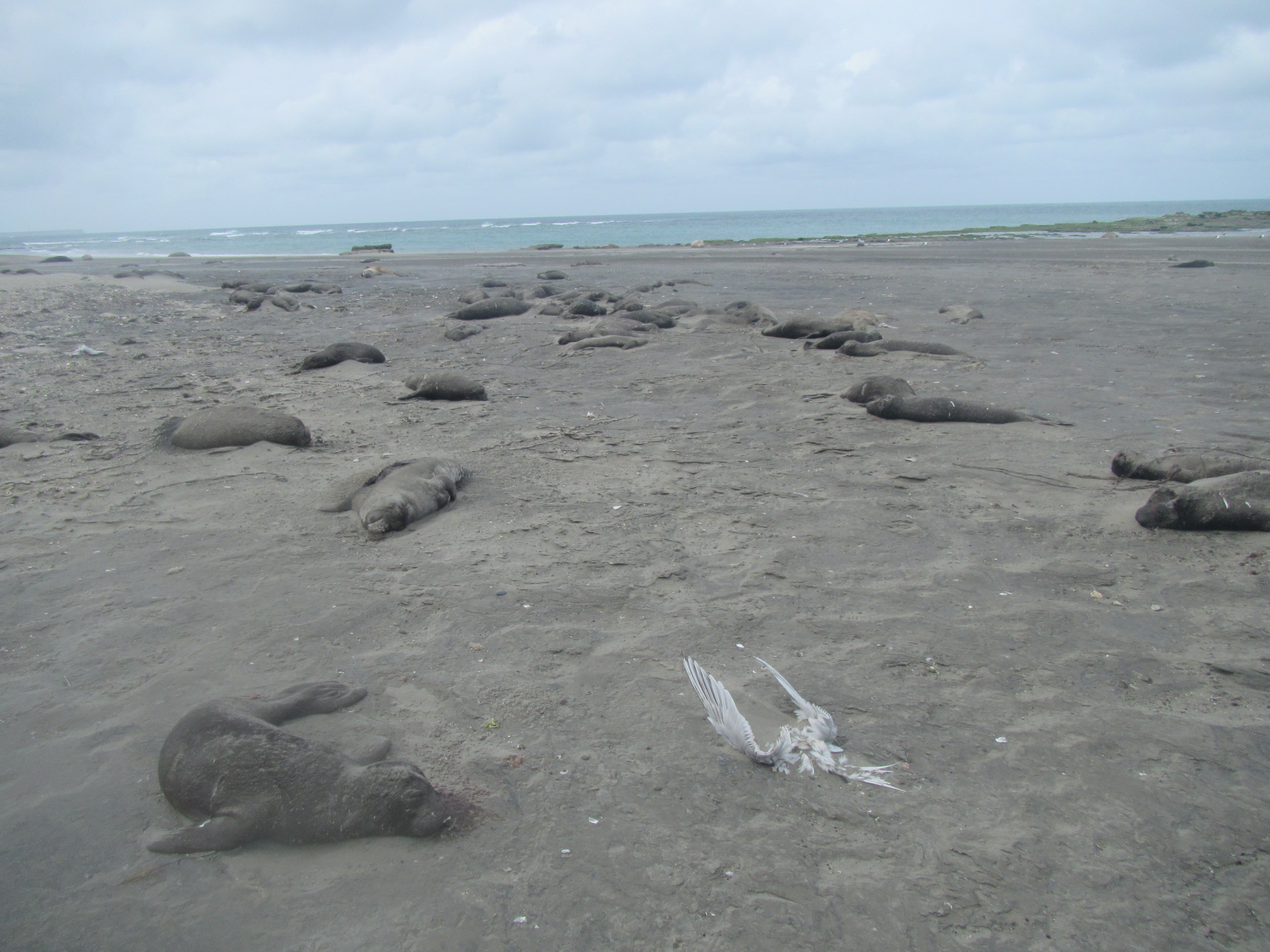Highly pathogenic H5N1 avian influenza viruses are becoming increasingly flexible and are adapting to mammals in new ways that could have global consequences for humans, wildlife and livestock, according to a new study of a massive outbreak among elephant seals in Argentina in 2023.
The study, published as a preprint and co-led by University of California, Davis’ School of Veterinary Medicine and the National Institute of Agricultural Technology (INTA) in Argentina, shows clear mammal-to-mammal transmission of the virus. It states the outbreak is the first known, multinational transmission of the virus in mammals ever observed globally, with the same virus appearing in several pinniped species across different countries over a short period of time.
The study’s genomic analysis showed the virus is now evolving into separate avian and marine mammal clades in South America, which is unprecedented. There is growing concern that H5N1 viruses adapted to mammal transmission could jump to other species, including people.
“This is increased evidence that we should be alert, especially for marine mammals,” said co-leading author Marcela Uhart, a veterinarian with the UC Davis Karen C. Drayer Wildlife Health Center and its Latin America Program. “The more it adapts to mammals the more important it becomes for humans.”

An outbreak unfolds
The current variant of H5N1 clade 2.3.4.4b began to cause problems at a global scale in 2020. While humans confronted the COVID-19 pandemic, H5N1, or “avian influenza,” began killing tens of thousands of seabirds in Europe before moving to South Africa. In 2022, it entered the U.S. and Canada, threatening poultry and wild birds, and then spread to South America in late 2022.
By February 2023, highly pathogenic avian influenza (HPAI) was detected in Argentina for the first time, affecting poultry primarily in inland central Argentina for five months. By August 2023, after two months of no outbreaks in poultry, the virus was found in sea lions at the tip of South America off the Atlantic coastline of Tierra del Fuego island. From there, it moved swiftly northward, with deadly results, first for marine mammals and later for seabirds.
In October 2023, following outbreaks in sea lions, the study authors surveyed a breeding colony of elephant seals at Punta Delgada along the coast of Península Valdés, Argentina. They recorded unprecedented mass mortality – some 17,000 elephant seals were dead. By November, 96% of pups born that season would die. Test results confirmed that HPAI H5N1 was present in the seals as well as in several terns that died at the same time.

The virus’ separation into avian and marine mammal clades unfolded as H5N1 clade 2.3.4.4b – specifically genotype B3.2 – arrived on the continent through migratory birds before spilling over to mammals. It then separated from the avian clade virus to become its own, marine mammal-adapted virus. Concerningly, while the virus moves across pinnipeds, it can also still infect birds. That was evident in the study, where the virus found in terns was identical to that from elephant seals.
“We’re showing the evolution of this marine mammal virus over time,” said virologist and co-leading author Agustina Rimondi of INTA. “This virus is capable of adapting to mammals, as we can see from the mutations that are consistently found in the viruses belonging to the mammalian clade.”
Influenza viruses commonly mutate and exchange gene segments, enabling them to adapt to new hosts.
Uhart and Rimondi said it is critically important that monitoring and investigation continue to better understand the consequences of the virus to human health, wildlife conservation and ecology.

The study’s co-authors include Ralph Vanstreels of UC Davis School of Veterinary Medicine; Martha Nelson of National Institutes of Health; Valeria Olivera of INTA-CONICET; Julieta Campagna, Victoria Zavattieri, Claudio Campagna and Valeria Falabella of Wildlife Conservation Society in Argentina; and Philippe Lemey of Rega Institute in Belgium.
The study was funded by the Wildlife Conservation Society, UC Davis and National Institute of Agricultural Technology

